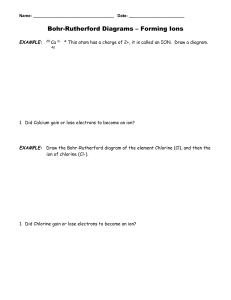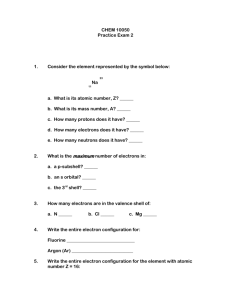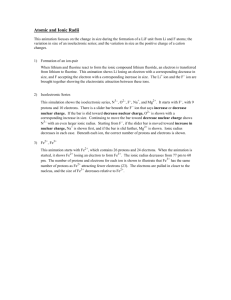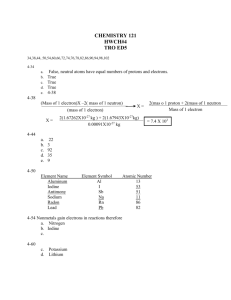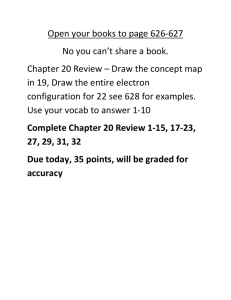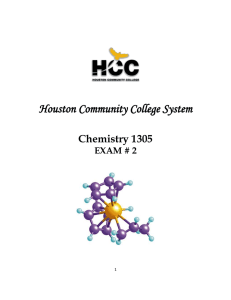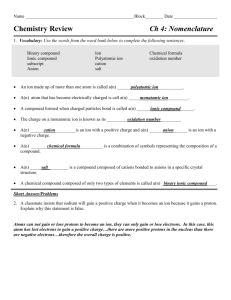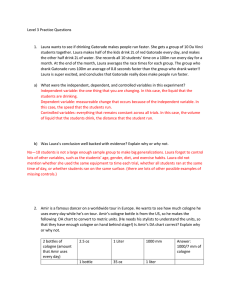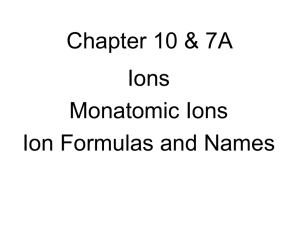Unit 4 Bonding Study Guide Name: Part 1: Use the periodic table
advertisement
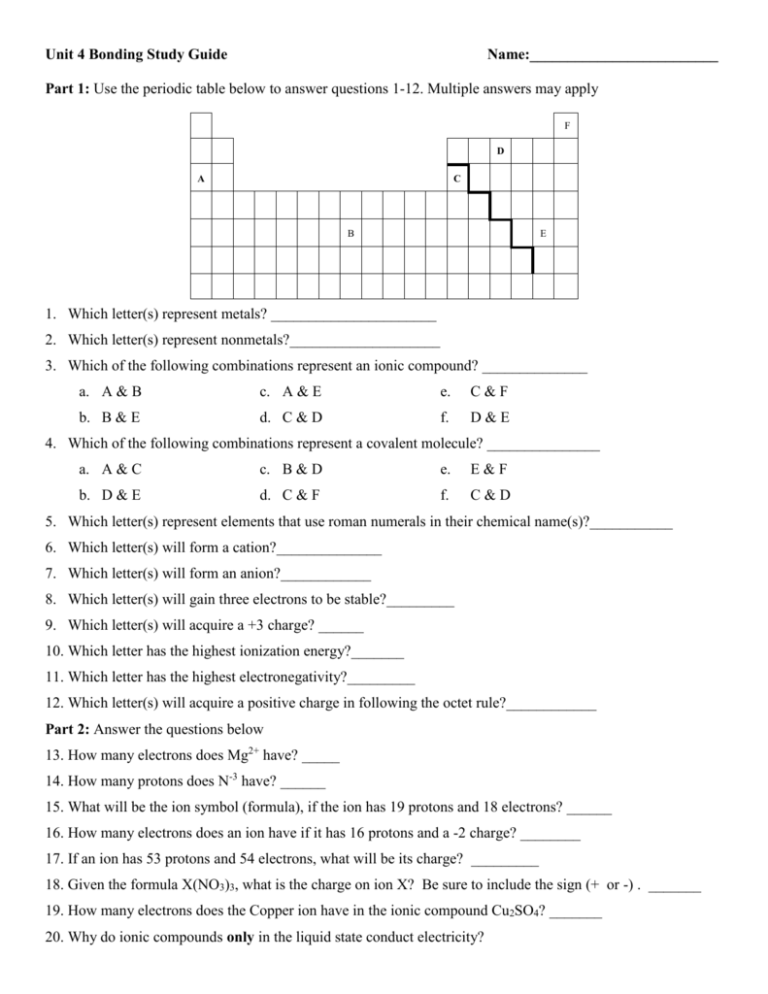
Unit 4 Bonding Study Guide Name:_________________________ Part 1: Use the periodic table below to answer questions 1-12. Multiple answers may apply F D A C B E 1. Which letter(s) represent metals? ______________________ 2. Which letter(s) represent nonmetals?____________________ 3. Which of the following combinations represent an ionic compound? ______________ a. A & B c. A & E e. C&F b. B & E d. C & D f. D&E 4. Which of the following combinations represent a covalent molecule? _______________ a. A & C c. B & D e. E&F b. D & E d. C & F f. C&D 5. Which letter(s) represent elements that use roman numerals in their chemical name(s)?___________ 6. Which letter(s) will form a cation?______________ 7. Which letter(s) will form an anion?____________ 8. Which letter(s) will gain three electrons to be stable?_________ 9. Which letter(s) will acquire a +3 charge? ______ 10. Which letter has the highest ionization energy?_______ 11. Which letter has the highest electronegativity?_________ 12. Which letter(s) will acquire a positive charge in following the octet rule?____________ Part 2: Answer the questions below 13. How many electrons does Mg2+ have? _____ 14. How many protons does N-3 have? ______ 15. What will be the ion symbol (formula), if the ion has 19 protons and 18 electrons? ______ 16. How many electrons does an ion have if it has 16 protons and a -2 charge? ________ 17. If an ion has 53 protons and 54 electrons, what will be its charge? _________ 18. Given the formula X(NO3)3, what is the charge on ion X? Be sure to include the sign (+ or -) . _______ 19. How many electrons does the Copper ion have in the ionic compound Cu2SO4? _______ 20. Why do ionic compounds only in the liquid state conduct electricity? Part 3: Name the following: 21. P2O5 __________________________________ 24. VO2 __________________________________ 22. Zn(NO3)2 ______________________________ 25. PbS ________________________________ 23. IO2 __________________________________ Part 4: Determine the formula for the following: 26. disilicon hexabromide ___________________ 29. silver acetate ___________________________ 27. copper (I) phosphate _____________________ 30.calcium sulfate__________________________ 28. gallium oxide __________________________ Part 5: Draw the Lewis structure and determine the molecular geometry for each. Lewis structure VSPER Molecular Shape 31.PCl3 32. CCl4 Part 6: Determine if the following bonds are polar or nonpolar 33. H-O 34.N-Cl 35. P-I VSPER Molecular Shape Name

